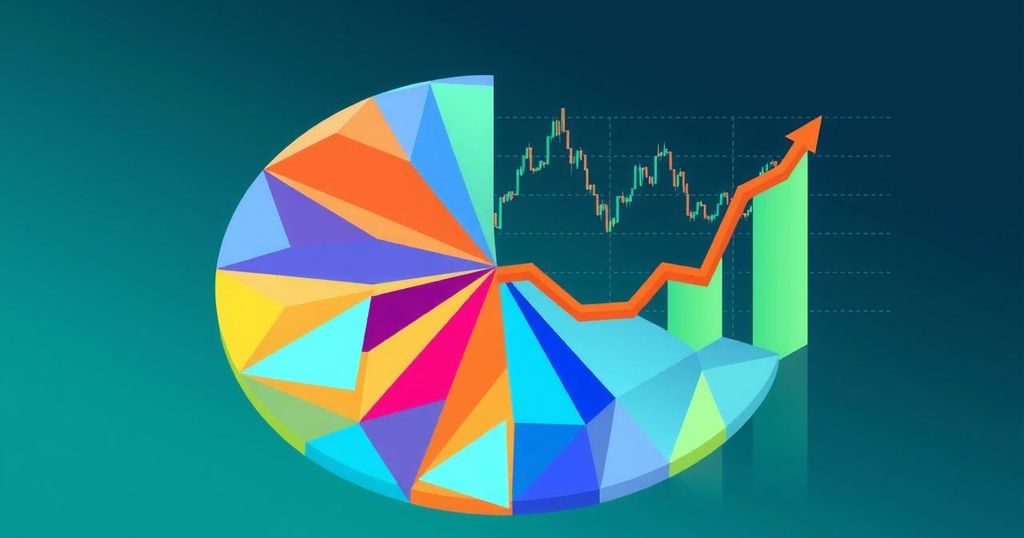Crypto and Stock Markets Intertwined Amid Economic Uncertainty
Cryptocurrency markets exhibit a growing correlation with stocks, particularly Bitcoin and the S&P 500, amid strong corporate earnings and federal liquidity plans. The total crypto market cap rose 8.5% since March, despite concerns about trade tensions and weak manufacturing data. Recent stock performance shows resilience, prompting market players to ponder whether a true separation of crypto assets from stocks will ever occur.
In recent developments, the cryptocurrency market has displayed a noticeable connection to stock movements, with Bitcoin (BTC) and the S&P 500 showing similar intraday trends over the past 10 days. This linkage has raised a lot of questions among traders about the long-awaited need for crypto to demonstrate clear “decoupling” from traditional equities. Interestingly, despite weak manufacturing data from the US, things seem to miraculously hold up, thanks largely to Federal Reserve liquidity plans and strong earnings from companies.
Since March, the total market capitalization for cryptocurrencies climbed about 8.5%. It’s noteworthy how, amidst swirling trade war headlines, traders are wondering if digital assets could eventually find their own footing, independent of the stock market. A genuine decoupling would affirm cryptocurrencies as their own asset class, potentially alleviating worries about a looming global recession. Yet, the ongoing correlation prompts people to ponder, what conditions would need to be met for a real separation to happen?
Shifting our focus to stocks, the S&P 500 recently faced some hurdles. After reaching a peak on February 19, it struggled to regain the 5,800 support level, largely due to ongoing trade conflicts with Canada and Mexico. Yet, equities have shown surprising resilience. Reports from Chinese state media suggested that the US is quietly reopening trade talks, granting waivers for certain imports even while retaining hefty tariffs. This back-and-forth indicates both countries are making concessions to get along.
Analysts now speculate if the S&P 500 might have hit a bottom at 4,835 earlier this month. The optimism is buoyed by companies’ robust first-quarter earnings as they navigate tariffs by either moving production elsewhere or expanding domestically. For instance, Microsoft wowed the market with a 13.2% surge in revenue, largely driven by AI demand. Similarly, Meta’s earnings surpassed expectations, easing fears about over-inflated AI valuations or investment cuts from the trade war.
Now, eyes are on the Federal Reserve, which appears to be the new focal point for investors. While the recent dip in US PMI manufacturing to a five-month low may seem alarming, market participants are far more interested in what the Fed will do next. With a potential shift back to asset purchasing to ease selling pressures, more liquidity could support riskier assets. Therefore, even if crypto and stocks remain tightly linked for the time being, the favourable macroeconomic conditions could still benefit cryptocurrencies quite a bit.
Over recent months, the cryptocurrency space has outshone traditional equities despite the current correlation. The total crypto market cap increased by 8.5% since March, whereas the S&P 500 dipped by 5.3%. This disparity grows even starker over six months, where crypto is up 29%, and the S&P 500 has faced a 2% decline. So, while it’s clear that there’s some relationship between these markets, it’s misleading to think they move in lockstep, especially when examining longer time frames.
However, it’s a bit premature to definitively declare that the S&P 500 has found a solid bottom or that trade skirmishes are behind us. A significant economic downturn would likely spell trouble for both markets. Yet today’s equity strength does hint at dwindling risk aversion among investors. For now, the apparent closeness between cryptocurrencies and stocks might be the best scenario traders could ask for. One thing is for sure; navigating these choppy waters is less about knee-jerk reactions and more about careful observations of macro trends and individual asset performances.




Post Comment